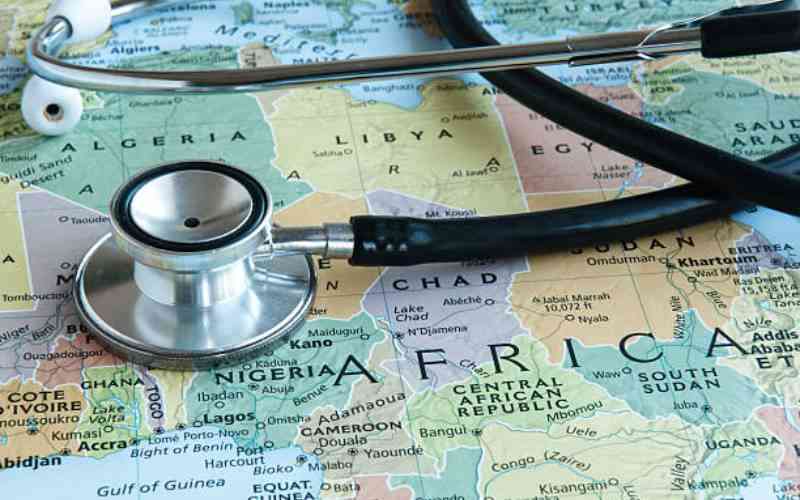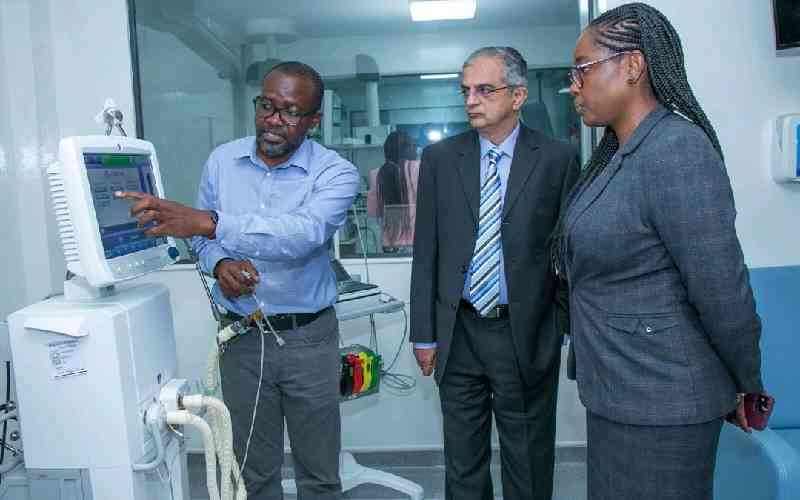There is no pain greater than that of losing a loved one, more so a child. And when such death occurs because of poverty, it is harrowing. Similarly, there is no greater frustration than being unable to fend for one’s family; not so much for want of trying, but for lack of opportunities. These two, sadly, encapsulate what ordinary Kenyans endure daily.
Some global conferences have sought to satisfy basic human needs, among them the provision of affordable healthcare, food, clean water, adequate shelter, education, sanitation and clothing by declaring them the "overriding objectives of national and international development policy".
In President Uhuru Kenyatta’s Big Four agenda there is an attempt to actualise these goals, but the reality on the ground tells a different story; one of sadness and desperation. Nothing exemplifies this more than the stories that have dominated media attention recently. Social media, in particular, has unflinchingly highlighted inequalities in society that depict the ever growing chasm between the haves and have-nots.
A week ago, a young woman walked six kilometres with the body of her six month baby from Mbagathi Hospital to the City Mortuary, where she endured more agony; as she was forced to stay with the corpse for hours because insensate mortuary workers were inured to her suffering. Her crime? Poverty. In another case, a jobless man attempted to smuggle his one-month-old child out of Kenyatta National Hospital to evade paying an accumulated Sh56,000 bill he could not afford.
Irrigation schemes
In Busia County, a girl whose hand is disfigured has pleaded to have it amputated to relieve pain and suffering. That desire is expressive of utmost hopelessness and desperation, and they are only a few of such cases across the country.
These happen despite self-gratification speeches by top leaders; totally insincere, that medical services have been improved and are within reach of the ordinary citizen. Stories of preferential treatment in counties selected to pilot the Universal Health Care are disheartening, but not entirely surprising.
Besides the challenges in health care, food security in Kenya is not likely to be achieved anywhere in the foreseeable future. If the Galana-Kulalu irrigation scheme in which billions of shillings were literally sunk is anything to go by, Kenyans will continue to be taken for a ride while their taxes are syphoned through suspect projects. The rationale behind irrigation schemes was informed by the realisation that rain fed agriculture is no longer viable. However, that idea has not moved from paper to action.
Human activity and deforestation have not only conspired to completely alter rain patterns, they have so debased the environment, the onset of rains comes with its own challenges. Without trees and natural vegetation, rain water, rather than give succor to plants, results in such flooding the soils’ top layer and crops are all washed away, and with them, human life as raging waters wreak havoc. Stripped of their natural habit, wild animals venture out of their sparse abode to destroy crops in certain areas. This human- animal conflict has its toll on food production, leading to food insecurity.
Health hazard
From the travails of farmers in the Rift Valley, one moves on those of farmers in Mwea, an area famous for producing high quality rice. Seemingly, there is a serious water paucity that residents complain stands not just to imperil rice production, the little murky water is shared between wild animals and humans, thus posing a great health hazard. Obviously, the situation in Northern Kenya is worse. Indeed, even in parts of western Kenya where water has never been an issue, the dwindling supply of water is noticeable as water levels reduce and some streams die. Something needs to be done.
Surprisingly, Kenya sits on underground water aquifers that can, according to scientists who made the discovery in 2013, supply the country with water for 70 years. These aquifers are in the Turkana Basin and Lotikipi Basin and could be holding 250 billion cubic meters of water, yet the average Kenyan usage is estimated to be only 3 billion annually.
These are resources any progressive government would tap into while planning for the country’s future. The Kenyan tragedy is that our collective leadership is myopic, too mired in deep rooted systemic corruption to consider anything worthwhile.
When delegations of Kenya’s political leadership at whatever level spend billions of taxpayers’ money on benchmarking trips that bear no results, one wonders why a delegation has not seriously tried to find out and replicate what Israel did to reclaim 90 per cent of desert land to become food sufficient and to export surplus food.
Our leaders never think to find out how Singapore and Malaysia left us in the dust in terms of development. Our leaders must put money where their mouths are.
Stay informed. Subscribe to our newsletter
Mr Chagema is a correspondent at the [email protected]
 The Standard Group Plc is a
multi-media organization with investments in media platforms spanning newspaper
print operations, television, radio broadcasting, digital and online services. The
Standard Group is recognized as a leading multi-media house in Kenya with a key
influence in matters of national and international interest.
The Standard Group Plc is a
multi-media organization with investments in media platforms spanning newspaper
print operations, television, radio broadcasting, digital and online services. The
Standard Group is recognized as a leading multi-media house in Kenya with a key
influence in matters of national and international interest.
 The Standard Group Plc is a
multi-media organization with investments in media platforms spanning newspaper
print operations, television, radio broadcasting, digital and online services. The
Standard Group is recognized as a leading multi-media house in Kenya with a key
influence in matters of national and international interest.
The Standard Group Plc is a
multi-media organization with investments in media platforms spanning newspaper
print operations, television, radio broadcasting, digital and online services. The
Standard Group is recognized as a leading multi-media house in Kenya with a key
influence in matters of national and international interest.









